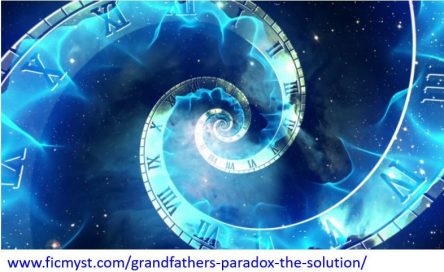
The Sun symbolises a powerful male deity who illuminates our day and forces upon us the darkness of night feared in ancient times. The Sun is difficult to look at in the “eye” because it blinds.
The Moon represents a gentle goddess who dimly illuminates the darkness of night, and we can look into her eyes without fear.
Although the Sun is the more significant life-giving celestial body, the Moon is the more exciting, the more attractive celestial phenomenon, “who” is constantly changing her “appearance”, changing her dress, like a lady. This is how the ancient observer saw it, and we can agree with him today.
I started this chapter with this mood picture because some (probably “boring” for most of you readers) calculations will follow soon.

The Metonic cycle is almost exactly 19 years, after which a given moon phase recurs within the astronomical year. (Relative to the day of a given astronomical phenomenon like the VEQ). The lunar month and the moon phases have initially been more significant in time representation and measurement than the solar year.
It is evident that observations of the “behaviours” of the Moon formed the basis of the early “lunar calendars”.
The ancient Chinese also knew the Metonic cycle. Thus, in the traditional antique lunisolar calendar, the Chinese still calculate the changing date of the Lunar New Year (Spring Festival) mainly based on the phases of the Moon.
The existence of the 19-year Metonic cycle was already known to the Babylonians and was used to correct the length of their lunar calendar year. However, the cycle was named after Meton, an Athenian mathematician and astronomer who lived in the 5th century BC.
The Metonic cycle allows for the construction of a calendar in which 12 years consist of 12 lunar months and seven years consist of 13 lunar months so that the total of 19 years spans 6940 days.
Callipus later specified the length of the Metonic cycle to 6939.75 days.
Both the 6.940 days and the 6.939,25 days were applied in different ancient Greek lunar calendars to correct the length of the year.
We have also seen that the calculation of the Easter tables (computus) in the Julian calendar was also based on the Metonic cycle.
The falsehood of the time reckoning can only be astronomical, so astronomy had to be relied upon to confuse the AD time. Even in ancient times, astronomers knew very well that any calendar, as we would say today, is only a tool for earthly digital approximation and modelling of analogue celestial reality.
Throughout the ages, people have tried to adapt the calendar to the periodic movements of the celestial bodies, first and foremost the Moon.
For this reason, ancient astronomers did not work with the calendar but with the well-observed tropical years (solar year) and the synodic lunar months (the time between two successive, similar lunar phases).
However, as seen, the 220 years of insertion is not an integer multiple of the 19 years of the Metonic cycle. Nevertheless, we should examine what happens to a given lunar phase assuming of insertion of 220 years! * The length of the tropical year as measured today: 365.24218967 days. * The synodic lunar month as measured today: 29.53058872 days. (The measured values vary slightly with time.)
The Metonic cycle compares 19 tropical years with the length of 235 synodic lunar months. This interval was transparent and relatively easy to measure in ancient times. Of course, the data differed slightly from current values; we know this, for example, from the precise dates of the old Chinese Taichu calendar.
Based on the above data, the 19 tropical years today correspond to 6939.60160393 days. The duration of the 235 synodic lunar periods is 6939.68834920 days.
Compared to the 19 tropical years, the Lunar phase delay today: is 0.08674547 days. (2h 5′) So, the Metonic cycle is a little inaccurate!
This inaccuracy makes 1.004421232 days, based on 220 years offset.
Very accurately, one day lunar phase time difference, in the case of 220-year time offset forwards or backwards. An astronomical time difference, comparing a specific event in the astronomical year, such as VEQ.
In the case of a forward jump (omission) of 220 years, it means a delay of the lunar phase by one day.
In the case of a backward jump (insertion) of 220 years, it means an advance of the lunar phase by one day.
As mentioned above, the timing of the phases of the Moon cannot be determined precisely with the naked eye.
Furthermore, the timing of celestial events, on average, slowly recedes in the Julian calendar and additionally “jumps back and forth” due to leap years.
The above three inaccuracies are superposed, added together, or subtracted.
In the case of a 220-year shifting backwards in the Julian calendar, a given lunar phase is on average 1.7 days ahead. Two hundred twenty years earlier, a given new moon occurs on a later but slightly different date from the average delay in the Julian calendar. We have already seen, for example, that the first new Moon of 45BC occurred almost quite exactly two calendar days later than the first new Moon of AD176.
To sum up: The above slight inaccuracy of the Metonic cycle explicitly supports the hiding of the insertion of 220 years. If 220 years were inserted, all historically recorded lunar phases would have been transformed into a similar lunar phases 220 years earlier. But the lunar phases remained almost precisely on their original astronomical day, so it wasn’t easy to detect the insertion! It was especially challenging to recognise the insertion because of the inaccuracy of the calendars.
To sum up: The above slight inaccuracy of the Metonic cycle explicitly supports the hiding of the insertion of 220 years. If 220 years were inserted, all historically recorded lunar phases would have been transformed into 220 years earlier similar lunar phases. But the lunar phases remained almost precisely on their original astronomical day, so it wasn’t easy to detect the insertion! It was challenging to recognise the insertion because of the inaccuracy of the calendars.
So, the slight inaccuracy in the Metonic cycle opened a ‘loophole’ to insert the 220 years in a way that is difficult to recognise.
In addition, at most, only a few astronomers could have wondered precisely on which calendar date a given lunar phase could have fallen 220 years earlier.
Nor have I found any reference in the literature to this particular property of the 220 years, that 220 years are associated with a moon phase shift of precisely one astronomical day.
